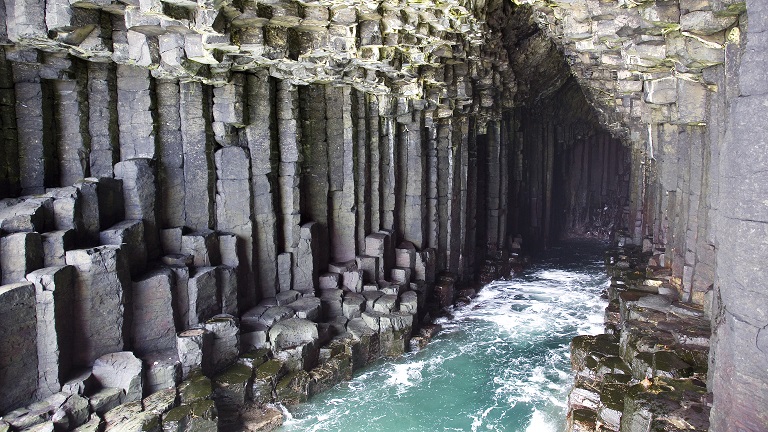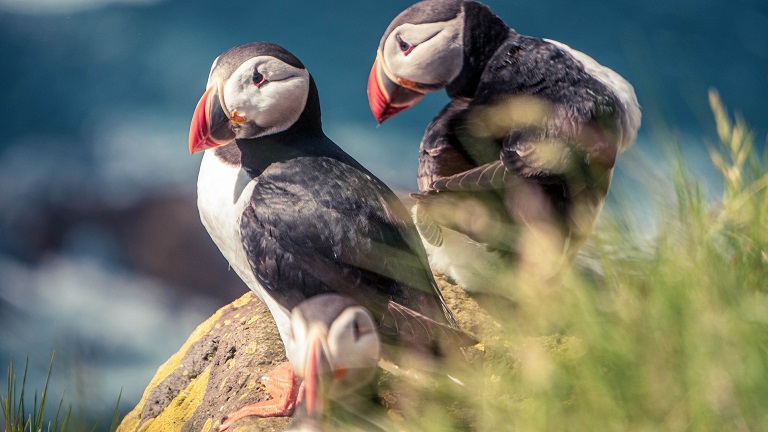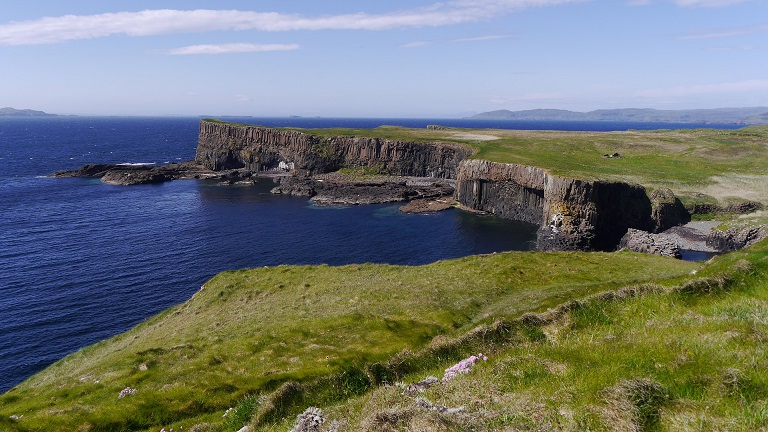At only half a mile long and a quarter of a mile wide, the little island of Staffa in the Inner Hebrides is famous for its stunning wildlife, natural gothic architecture and raw, brooding energy.
Carved with natural basalt columns that prop up a frilled headland topped with rich soil and lush grass, the physical presence of Staffa is certainly impressive. Created millions of years ago by volcanic activity, the island’s vertical columns are a striking piece of natural engineering that never fail to amaze all those who make their way to see it.
One of its most famous features is Fingal’s Cave, a 227-foot sea cave formed by thousands of years of relentless wind and waves. Made up of countless hexagonal basalt columns, the cave is unlike anything else in the world and a feast for the senses with its unique sounds, colours and striking aesthetics.

If you’d like to see Staffa Island and Fingal’s Cave for yourself, then you can take part in guided excursions to the island. Boat trips regularly leave from Fionnphort on the Isle of Mull in season and afford stunning views of Mull’s coast, including views of the imposing cliffs of Ardmeanach and the Wilderness of Burg.
Once aboard, you can sit back and take in the wild panoramas, whilst keeping your eyes peeled for seabirds like guillemots, razorbills, fulmars, kittiwakes, gannets and more. If you’re lucky, you may even be able to catch sight of otter, porpoise, dolphin, basking shark and even whales as you make your way along the coast too.

Of course, if you visit in spring or early, then the stars of the show have to be the island’s population of migratory puffins. Having spent around 8 months at sea, large numbers of puffins flock to Staffa to find mates and nest. Full of character with their beautiful markings and slightly ungainly walks, they are a real treat to see.
If the weather and tides lend a helping hand, your tour operator may be able to land and give you some time to explore the island on foot. At low tide, the fractured columns of the island provide a platform of sorts to walk around on and venture into the cave itself, lending a whole new perspective of this natural wonder.

As you walk around, you’ll be retracing the steps of many famous visitors – including Queen Victoria, Lord Tennyson, Jules Verne, Robert Louis Stevenson and John Keats – who all fell for the island’s charm. It also captured the imagination of Sir Walter Scott, the Scottish novelist and poet born in 1771, who described Fingal’s Cave as:
“one of the most extraordinary places I ever beheld. It exceeded, in my mind, every description I had heard of it... composed entirely of basaltic pillars as high as the roof of a cathedral, and running deep into the rock, eternally swept by a deep and swelling sea, and paved, as it were, with ruddy marble, baffles all description.”
Feeling inspired to explore the beautiful landscapes of the Hebrides? Take a look at our luxury cottages in Mull here.